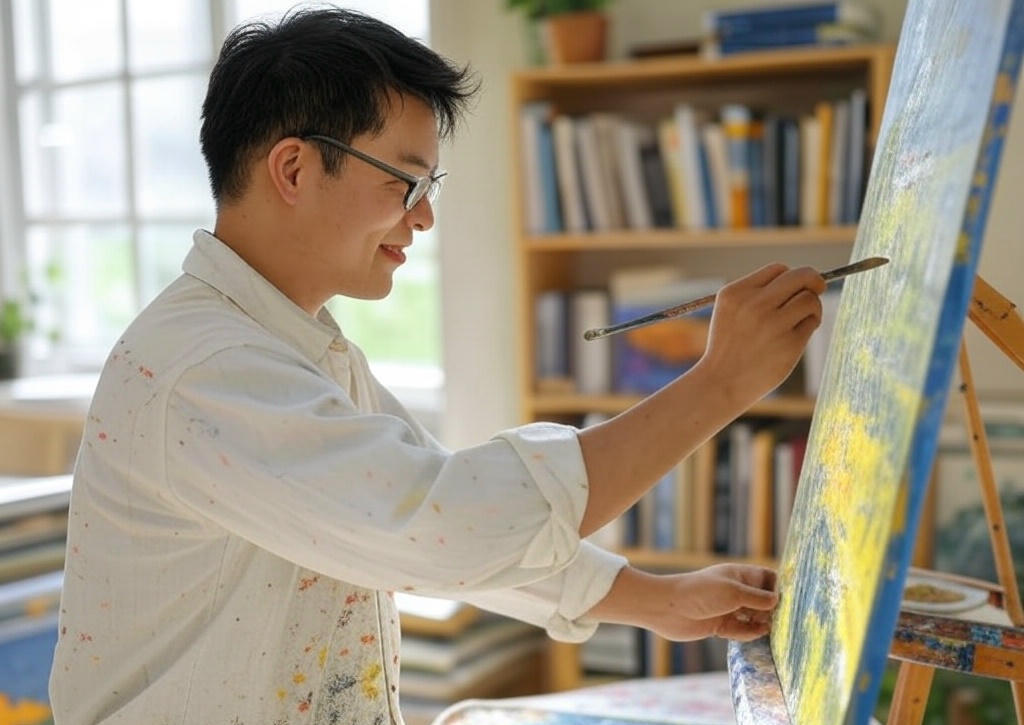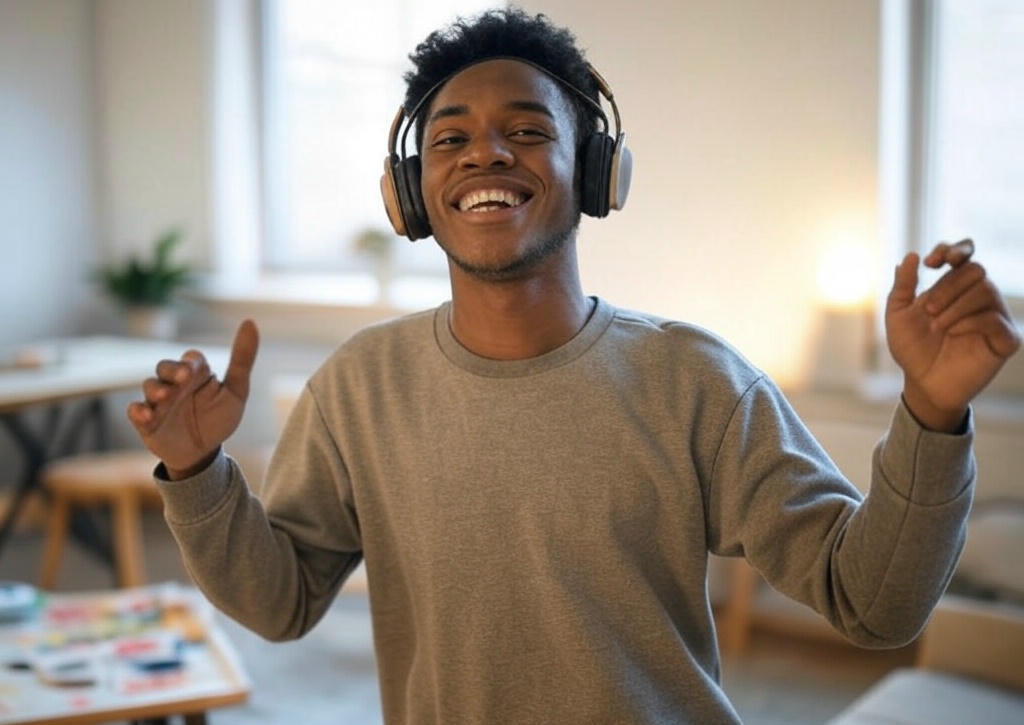Every person experiences a range of emotions including stress, tension, and positive feelings. We all have hobbies that bring us joy and peace of mind. Artistic expression helps illuminate our imagination and brings mental satisfaction. Mental wellbeing is closely linked to creative activities for some people, while others find similar benefits in sports. Each type of activity has a significant impact on mental health.
Creativity helps restore energy after a hard day’s work. It effectively lifts your mood and positively impacts brain function. Creative activities stimulate brain regions associated with pleasure and reward. We can focus on activities that bring us enjoyment. Creativity is an excellent way to improve emotional wellbeing and boost mood. We express ourselves through various activities we enjoy. Hobbies play a crucial role in maintaining emotional well-being.
Unlocking Mental Wellness Through Creative Expression
Our organization, Start My Wellness, offers high-quality therapy and medication services. We provide services to everyone, regardless of background. We will help you find yourself and improve your self-esteem. In today’s world, many people face mental health challenges. To restore strength and improve overall well-being, artistic expression is an excellent solution. Here are the key benefits backed by scientific research:
- Reducing anxiety. Self-expression helps improve overall wellbeing. Studies show that artistic practices reduce cortisol levels, improve mood, and increase dopamine production. Through painting and drawing, we can express our imagination visually.
- Reducing depression. Music can help prevent depression through its emotional impact and uplifting melodies. This creative engagement involves connecting with meaningful lyrics.
- Avoiding stress. For stress relief, try letting your imagination flow through writing. Writing poems or stories will help you focus on yourself. You will feel emotional relief and improve your cognitive performance.
The Science Behind Creativity and Emotional Well-Being
The science of emotional well-being shows that this practice is excellent for the brain. Creative activities trigger brain processes that significantly influence our mood. We express ourselves through activities like drawing, music-making, or writing. To improve your mood and restore self-esteem, you can find the best therapist. Here’s what science tells us about creativity:
- Creative self-expression activates brain regions that help regulate mood. People experience emotional release when engaging in meaningful activities. Drawing is a perfect example, as it helps improve self-awareness and emotional regulation.
- For stress relief, studies recommend engaging in enjoyable activities. During these enjoyable activities, fear and stress levels decrease. Creative practice helps produce dopamine and serotonin. These hormones affect mood and emotional well-being.
- Purposeful creative activities help reduce depression and restore energy. These activities help people find inner satisfaction and a sense of balance. To improve their condition, everyone can seek individual therapy.
Why Artistic Expression Works as Stress Relief

To improve your overall well-being, you can contact us, and we will help you choose a treatment method and quality therapy according to your problem. Everyone can engage in creativity, which will help improve their overall well-being. Research shows that creative expression is highly effective for managing stress. Here’s why self-expression helps reduce stress:
- Reducing cortisol levels. Self-discovery and creative practice help you relax and alleviate stress. Just 30 minutes a day can lower your body’s cortisol levels.
- Improving mood. During creative practice, the body produces the hormone dopamine. It has a significant influence on mood, improving it. A person relaxes and does something they like.
- Improved ability to cope with emotional stress. Drawing and listening to music are the best ways to reduce emotional stress. Artistic expression helps release emotions and address problems that worry you. For additional support, everyone can sign up for online therapy.
Creativity as a Form of Therapy and Self-Discovery
Group therapy provides powerful support for emotional wellbeing. During therapy, each person can express their emotions and immerse themselves in self-discovery. Therapists incorporate creative activities as therapeutic techniques. These activities help with self-discovery and exploring deeper emotions. The result is restored energy and improved mood. Here’s how it works:
- Art therapy. Used by therapists to combat depression. Art therapy involves drawing and expressing emotions through imagination. Images can characterize a person and show their inner state.
- Keeping a diary. Keeping a diary is another principle of therapists’ work. By exploring thoughts and expressing emotions, people gain valuable self-insights. A person can reduce anxiety and understand what really bothers them.
- Therapeutic movement. Therapeutic movement involves dancing and bodily improvisation. Through movement, people express emotions and release inner tensions. Art therapy aims to rebuild emotional strength and heal the mind.
From Burnout to Balance: Art as Emotional First Aid
Expectations from therapy may vary, but practice helps a person. The modern world contains many sources of stress and emotional tension. Professionals, performers, consumers, and students often suffer from exhaustion. Creativity becomes the best way to restore mental health and improve mood. Here’s how it helps in everyday life:
- Regular engagement with creative activities helps restore emotional balance. People feel more alive and open to new experiences. It develops resilience and prevents burnout. Drawing, dancing, and other practices are indispensable. Regular practice helps reduce pressure from the world and maintain mental health.
- A creative approach with constant practice helps adapt to stress. People dealing with ongoing stress find that enjoyable hobbies help them relax. While dancing, drawing, or enjoying music, people connect with their authentic selves.
Start Small: How to Add Creative Habits to Your Mental Wellness Routine
Developing artistic habits takes time, but here are some simple steps to get started. You’ll discover how artistic expression can positively impact your personal growth. Here are some simple ways to begin:
- Daily drawings. Try creating simple drawings of whatever comes to mind. Drawing helps you open up and explore new interests. Daily drawing sessions help you relax and express thoughts that might be bothering you.
- Written prompts for self-discovery. Take time to write down your worries and goals. You can describe what you want most and how to get there. Writing down your thoughts can help you face your fears and take positive action.
Conscious photography. Regular photography can support your mental health and boost your mood. Try photographing nature, self-portraits, or beautiful moments that catch your eye.


